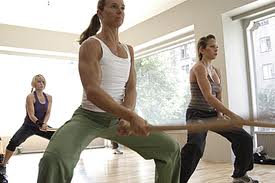 If you ask most people what the predominant weapon of today’s age is, the answer would likely be ‘the handgun’. They’re right, of course; since about the 17th century we’ve moved away from using swords, daggers, and assorted other close-combat weapons in any meaningful capacity. Sure, they still float around in people’s houses, or you might learn some sword arts in a kenjutsu dojo if you’re lucky, but you generally don’t expect melee weapons training to come in handy on the street should (Heaven forbid) someone attack you, right? Not necessarily true. If you have a collection of historical replica swords, you might as well learn to use them.
If you ask most people what the predominant weapon of today’s age is, the answer would likely be ‘the handgun’. They’re right, of course; since about the 17th century we’ve moved away from using swords, daggers, and assorted other close-combat weapons in any meaningful capacity. Sure, they still float around in people’s houses, or you might learn some sword arts in a kenjutsu dojo if you’re lucky, but you generally don’t expect melee weapons training to come in handy on the street should (Heaven forbid) someone attack you, right? Not necessarily true. If you have a collection of historical replica swords, you might as well learn to use them.
Learning how to use a weapon, or any martial arts discipline, better prepares you for having it used against you. Sure, nobody’s likely to charge at you with a sword these days, but what about a baseball bat or a lead pipe? Many schools of swordplay teach disarming techniques that would also work against such instruments. You also have the advantage of know what the weapon can and can’t do, so you know how the attacker is likely to strike. For example, in European longsword training, you learn that the most effective sword cuts are from the upper angles due to the force of gravity, so you would expect blows to come from higher up and act accordingly. You can then disarm and discard the weapon incapacitate your attacker, then get out of the area entirely and contact the police.
Let’s say you don’t want to disarm for whatever reason. You still will learn a host of grappling techniques in many schools of medieval martial arts. These fighting systems were originally designed for warriors who would be wearing armor that made striking attacks nigh-useless. Aside from that, the hands would be occupied by the weapon. Grappling in medieval martial arts involved getting inside the enemy’s defense and using his own body as a fulcrum. You would focus on pulling the attacker off-balance and to the ground, then (you guessed it) immediately running away.
Physical aspects aside, your combat psychology will improve. It’s no big surprise that weapons-based fighting was lethal. Back in the day, you could be skewered by someone even if you were just walking to the local market for some food, and you had to prepare. Unarmed combat is dangerous, but not as lethal. If you lose, you’ll get a few bumps and bruises, a broken bone if you’re unlucky. When weapons come into the equation, you’re talking life and death. There’s something about swinging a sword or dagger or mace during training that awakens a slight bit of ferocity, or willingness to act when necessary. That’s the true core of martial arts training. It’s not about learning techniques; after all, there are only so many ways for the body to move or for you to use a weapon. Most of your training is drilling the motions into muscle memory, but perhaps an even bigger portion is teaching you to make the conscious decision to fight when you have to and be able to act appropriately in the heat of the moment.
Owning a collection of sharp pointy objects of death is all well and good, but to really make the most of your weapon ownership, it’s good to seek out instruction. Not just for the knowledge, but for your own safety. Learn to respect your swords and other weapons, or you risk fatal injury to yourself or someone you love.
Carson Williams is a professional blogger that provides information on collecting replica firearms, badges and equipment. He writes for Maxarmory, where you can find a variety of collector badges and replica guns.



